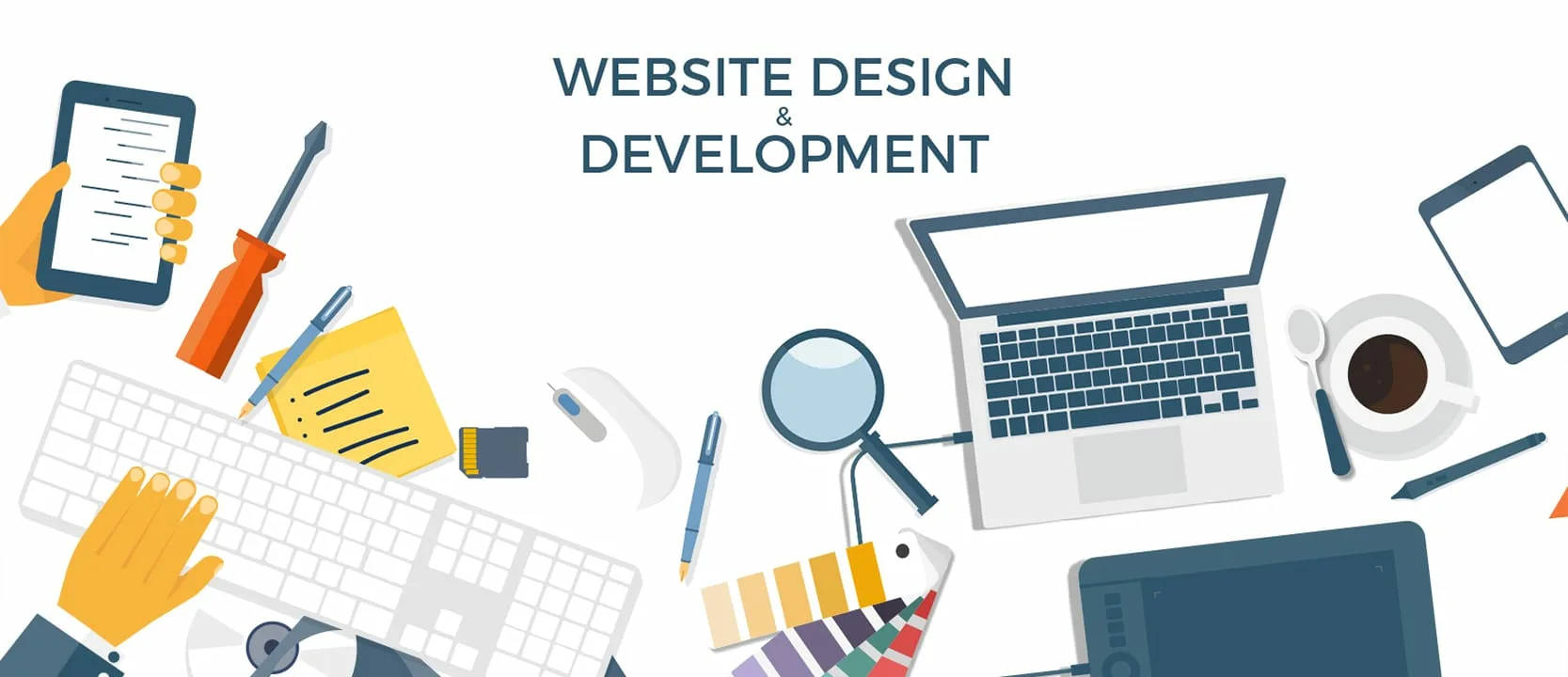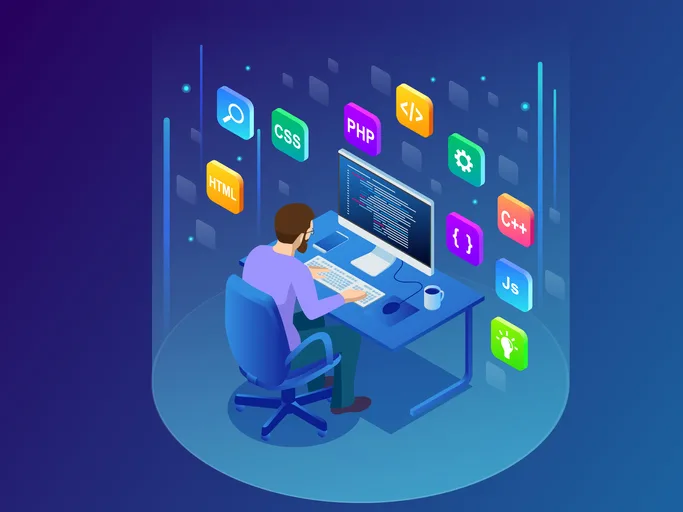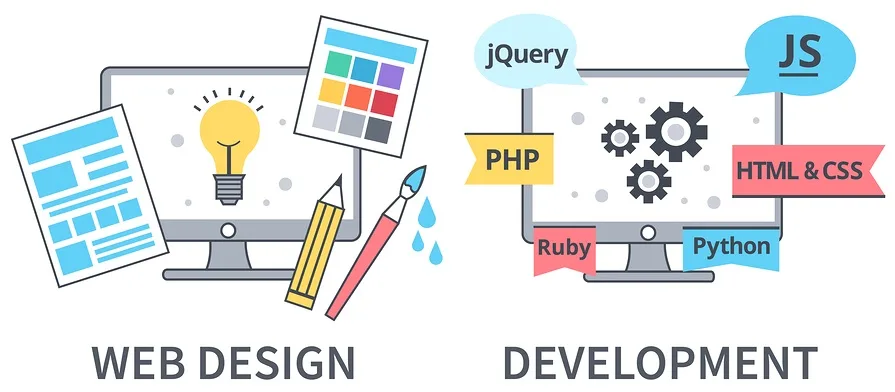Crafting Success with the Art and Science of Web Design and Development

In today's digital age, having a strong online presence is essential for businesses to thrive. This is where web design and web development services play a crucial role. Web design encompasses the aesthetics and usability of a website, while web development focuses on the technical aspects of bringing it to life. Now, we will explore the art and science behind web design and web development services, their significance in the digital landscape, and how they work together to create stunning and functional websites.
What is Web Design and Development?
Web design and web development are two distinct but interconnected disciplines that are essential for creating and maintaining websites and applications that are easy to use, visually appealing, and accessible to a wide range of devices. Both are crucial for building and maintaining a successful online presence.
Firstly, Web design is the visual aspect of a website or application, It focuses on creating a visually appealing and user-friendly interface that engages visitors and enhances their experience. Web designers use their creative skills to select color schemes, typography, graphics, imagery, and layout to create a cohesive and attractive design. They also consider usability principles, ensuring that the website is easy to navigate and intuitive for users.
The different areas of Web design include web graphic design, user interface design (UI design), authoring; including standardized code and proprietary software, user experience design (UX design) and search engine optimization.
On the other hand, web development makes a site or application work in the first place. It involves the technical process of bringing the design to life and making it functional. Web developers use programming languages such as HTML, CSS, JavaScript, and others to write the code that forms the foundation of a website. They handle the back-end development, which includes server-side scripting, database management, and ensuring the website's functionality. Web developers also integrate interactive elements, e-commerce functionality, content management systems, and other dynamic features that enhance user engagement.
The Synergy of Web Design and Web Development:
Web design and web development are crucial for creating exceptional websites. Designers and developers collaborate closely for seamless integration. Designers provide assets like mockups, typography, and branding guidelines, while developers bring designs to life through code. During development, they ensure accurate translation of design elements and optimize performance. Ongoing collaboration is essential for maintenance and updates. Web design focuses on aesthetics and user experience, while web development handles technical aspects. Together, they create visually appealing, user-friendly websites that adapt to evolving technology. In summary, web design and web development are complementary disciplines that work together to build successful online presence.
What are the Web Design and Development Tools?
Web design and development use various tools to create, code, and improve websites. These tools help designers and developers work more efficiently and achieve their goals. Here are some commonly used tools:
- Text Editors and IDEs: Programs like Sublime Text, Visual Studio Code, and Atom make coding easier with features like syntax highlighting.
- Graphic Design Tools: Adobe Photoshop, Sketch, and Figma are used to create visually appealing layouts and customize images and graphics.
- Prototyping Tools: Tools like Adobe XD, InVision, and Framer help designers create interactive prototypes to showcase user flows and interactions.
- Wireframing Tools: Balsamiq, Axure RP, and Sketch Wireframe Kit are useful for creating simple blueprints of a website's structure.
- Version Control Systems: Git, Mercurial, and Subversion track code changes, enable collaboration, and manage code repositories.
- Content Management Systems (CMS): WordPress, Joomla, and Drupal provide pre-built frameworks that allow non-technical users to manage website content easily.
- Browser Developer Tools: Built-in tools in web browsers (e.g., Chrome Developer Tools, Firefox Developer Tools) help inspect and debug websites, test responsiveness, and optimize performance.
- Task Runners and Build Tools: Grunt, Gulp, and Webpack automate repetitive tasks, optimize code, and streamline development workflows.
- Performance Optimization Tools: Tools like PageSpeed Insights, Lighthouse, and GTmetrix analyze website performance and suggest improvements for faster loading and enhanced user experience.
- Frameworks and Libraries: Popular frameworks and libraries such as React, Angular, Vue.js, Bootstrap, and jQuery provide pre-built components and functionalities, speeding up development.
These are just a few examples of the many tools available. The choice of tools depends on project requirements, designer and developer preferences, and desired outcomes. Ultimately, these tools empower professionals to create visually stunning, functional, and optimized websites efficiently.


The Importance of Web Design and Web Development:
Web design and web development play indispensable roles in establishing a strong online presence:
- Visual Appeal and User Experience: A visually appealing design and intuitive user experience entice visitors to explore the website and foster positive engagement. The design elements, such as color schemes, typography, and layout, create an inviting and cohesive interface.
- Functional and Optimized Performance: Web development ensures that the design is functional and optimized for performance. Developers use programming languages and techniques to construct the website's underlying structure, facilitating seamless navigation and fast loading times.
- Enhancing Brand Image and Driving Business Growth: The collaboration between web design and web development contributes to enhancing the brand image. Well-designed and seamlessly functioning websites build trust, credibility, and effective connections with the target audience.
- Engaging User Experience and Valuable Content: Websites built on the foundations of web design and web development create an engaging user experience. By providing valuable content and interactive features, businesses attract and retain customers, leading to increased conversions, sales, and overall success.

In conclusion, the collaboration between web design and web development is vital for creating engaging, user-friendly, and functional websites. The visual appeal and user experience established through web design, combined with the technical implementation and functionality of web development, form the backbone of a strong online presence. Prioritizing both disciplines enables businesses to enhance their brand image, engage their audience effectively, and achieve sustainable growth in the competitive digital landscape.
So, whether you are starting a new venture or looking to revamp your existing website, don't miss out on the opportunity to stand out in the digital landscape. Invest in StepaceMarketing professional web design and web development services, and let us help you build a powerful online presence that drives business growth. Contact us today to schedule a consultation and discover how we can transform your vision into a stunning reality.
